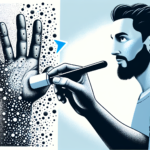Image morphing is a fascinating field at the intersection of art and technology. This technique allows for the seamless transformation of one image into another, creating visually stunning effects and valuable practical applications. By combining creative ingenuity with sophisticated algorithms, image morphing has become a powerful tool in entertainment, scientific research, digital media, and more. This article delves into the core techniques of image morphing, explores its diverse applications, and concludes with some frequently asked questions on the subject.
Understanding Image Morphing
Image morphing refers to the process of smoothly transforming one image into another. This transformation is achieved by mapping the pixel values of one image to another image in a gradual and seamless manner. The key to effective morphing lies in the precise manipulation of the shapes and features of the original and target images.
Morphing is an umbrella term that covers various specific techniques, such as cross-dissolving and warping. These techniques are combined to produce the final morphed image sequence. Cross-dissolving involves blending the pixel values of two images, while warping manipulates the geometry of the images to align their respective features.
Techniques of Image Morphing
1. Mesh Warping
Mesh warping is one of the most commonly used techniques in image morphing. This approach divides images into a grid of control points, forming a mesh structure. The coordinates of these control points in the source and target images are matched, and the pixels in the images are then interpolated based on this mapping. Mesh warping ensures that the transformation appears smooth and natural, as it warps local regions of the image rather than affecting it uniformly.
2. Feature-Based Image Morphing
Feature-based morphing techniques focus on identifying and manipulating crucial features within images, such as eyes, nose, and mouth in facial morphing. These features are manually marked or automatically detected using algorithms like the Active Shape Model (ASM) or Active Appearance Model (AAM). The morphing process ensures that these feature points are accurately aligned, resulting in a more realistic transformation.
3. Beier-Neely Morphing
The Beier-Neely morphing algorithm is another widely-used approach. This algorithm calculates the transformation by defining a set of line pairs in the source and target images. Each line pair in the source image has a corresponding line pair in the target image. The pixels in the source image are then warped such that lines align with their counterparts in the target image. This method offers flexibility and precision in controlling the morphing of specific image features.
4. Multi-Resolution Splines
Multi-Resolution Splines, or pyramid-based approaches, break down images into different frequency bands through techniques like the Laplacian Pyramid. By manipulating these bands independently, it is possible to achieve high-quality morphing results that preserve fine details and textures. The use of multi-resolution splines helps in reducing artifacts and ensuring a visually smooth transition between images.
5. Image Inpainting and Extrapolation
Image inpainting and extrapolation play crucial roles in image morphing. Inpainting refers to the process of filling in missing or corrupted parts of an image using the surrounding pixel information. This is particularly useful when dealing with partial occlusions or missing features during the morphing process. Extrapolation involves predicting and extending the image content beyond its original bounds, ensuring continuity in the morphed result.
Applications of Image Morphing
1. Entertainment and Film Industry
One of the most prominent applications of image morphing is in the entertainment and film industry. Morphing techniques are widely used to create mesmerizing visual effects in movies, TV shows, and advertisements. From transforming characters and creatures to simulating aging or de-aging effects, morphing enhances storytelling and captivates audiences. Iconic examples include the morphing sequences in movies like “Terminator 2: Judgment Day” and “The Matrix.”
2. Digital Media and Animation
In digital media and animation, image morphing is employed to create dynamic transitions, smooth animations, and engaging content. Morphing tools are integrated into software applications to enable designers and animators to achieve fluid transformations between graphical elements. This technique is essential for creating realistic facial expressions, character animations, and visual storytelling in video games and multimedia presentations.
3. Facial Recognition and Identity Verification
Facial recognition systems utilize image morphing techniques to improve accuracy and robustness. Morphing helps in generating synthetic facial images that augment training datasets, enhancing the performance of machine learning models. By simulating various facial expressions, angles, and lighting conditions, morphing improves the reliability of facial recognition systems used in security, surveillance, and identity verification applications.
4. Medical Imaging and Diagnosis
In the field of medical imaging, morphing techniques find valuable applications in visualizing and analyzing anatomical changes over time. Medical professionals use morphing to compare images from different time points, aiding in disease diagnosis, treatment planning, and monitoring of patient progress. For example, morphing can be used to visualize tumor growth, track organ development, or study the progression of neurodegenerative diseases.
5. Art and Creative Expression
Image morphing serves as a powerful tool for artists and creative professionals to explore new forms of visual expression. Morphing allows artists to blend different styles, genres, and concepts seamlessly, producing unique and thought-provoking artworks. Whether it is creating surreal digital art, experimenting with hybrid forms, or exploring visual metaphors, morphing opens up endless possibilities for artistic innovation.
Conclusion
The art and science of image morphing bring together creativity and technology, enabling the seamless transformation of images with stunning visual effects and practical applications. From the intricacies of mesh warping and feature-based techniques to the precision of Beier-Neely morphing and multi-resolution splines, the techniques used in image morphing continue to evolve. Its applications span diverse fields, including entertainment, digital media, facial recognition, medical imaging, and art, showcasing the immense potential of this technology.
Frequently Asked Questions (FAQs)
1. What is image morphing?
Image morphing is the process of smoothly transforming one image into another by manipulating pixel values and geometric features. It combines techniques like cross-dissolving and warping to achieve seamless transitions between images.
2. What are the key techniques used in image morphing?
Some key techniques in image morphing include mesh warping, feature-based morphing, Beier-Neely morphing, multi-resolution splines, and image inpainting and extrapolation. These techniques ensure smooth and visually appealing transformations between images.
3. How is image morphing used in the entertainment industry?
In the entertainment industry, image morphing is widely used to create visual effects in movies, TV shows, and advertisements. It enables the transformation of characters and creatures, simulates aging or de-aging effects, and enhances storytelling by producing visually captivating sequences.
4. Can image morphing be applied in medical imaging?
Yes, image morphing has valuable applications in medical imaging and diagnosis. It helps visualize and compare anatomical changes over time, aiding in disease diagnosis, treatment planning, and monitoring patient progress. Morphing techniques are used to track tumor growth, organ development, and neurodegenerative disease progression.
5. How does image morphing contribute to facial recognition?
Image morphing enhances facial recognition systems by generating synthetic facial images for training datasets. By simulating different facial expressions, angles, and lighting conditions, morphing improves the accuracy and robustness of facial recognition models used in security, surveillance, and identity verification applications.









